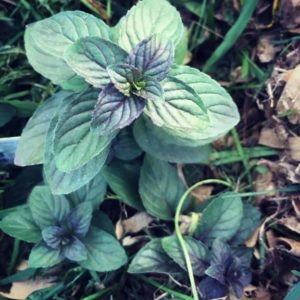The rosemary tree is a hardy, low-maintenance perennial plant that is often called by its botanical name rosemarinus officinalis.
This fragrant plant has an average lifespan of 15 years, so taking care of this plant properly certainly will be worth your while!

This plant is native to the Mediterranean. You may find it growing in the wild in Portugal and northwest Spain. If you want to learn how to care for this plant properly, this post’s information will help you greatly.
Go through this post and make notes of any important and interesting facts that you find!
| Scientific Name | Rosemarinus officinalis |
| Common Names | Rosemary, Dew of the Sea, Sea Dew, Elf Leaf, Guardrobe, Incensier, Compass Weed, and Polar Plant |
| Hardiness | Hardy perennial |
| Indoor or Outdoor Plant? | Can be grown indoors and outdoors |
| Sun Exposure | At least six hours of sunlight per day |
| Water | Water weekly or fortnightly |
| Size | Up to eight feet tall and up to four feet wide |
| Soil Type | Well-drained, loamy soil |
| Soil pH | pH level between 6.0 to 7.0 |
| Flower | Small lilac flowers |
| Growing Difficulty Level | Easy |
Rosemary Tree Appearance and Characteristics
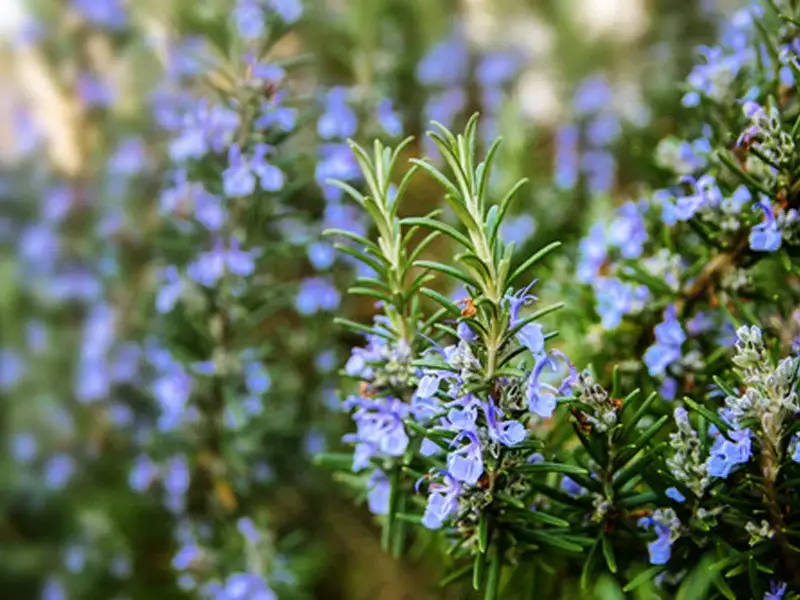
The rosemary tree looks more like a bush. It has a short stump, and its branches and leaves grow up and out. Its leaves are leathery, juicy, all whilst being long and slender.
Their leaves are dark green, and the underside is covered with white powder. This gives the rosemary tree an overall grey look. Their flowers are usually lilac, although they do sometimes produce white or soft pink flowers too.
Flowers grow in clusters all over the tree. This is a beautiful sight, especially if you have more than one rosemary tree in your backyard.
How to Grow a Rosemary Tree
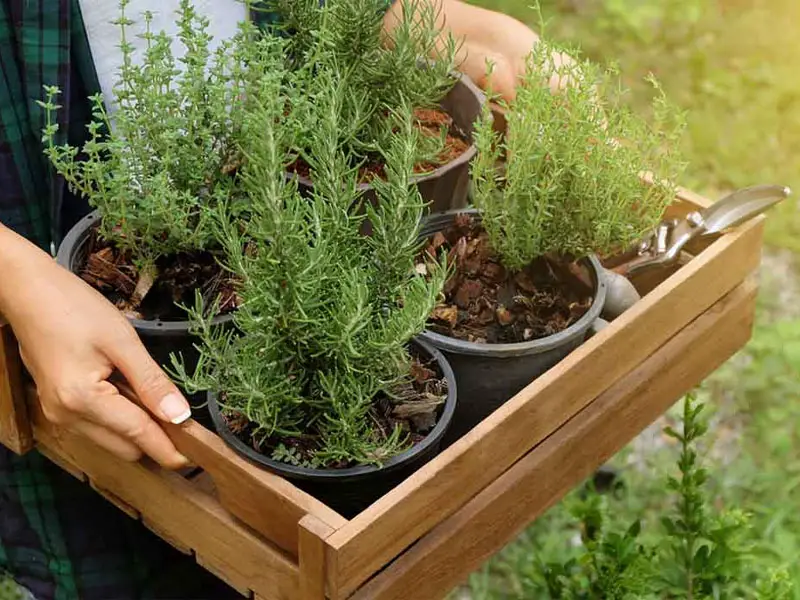
Growing rosemary is very easy, especially if you live in a hot, sunny climate. Always remember, where you choose to plant rosemary is more important than anything.
When in doubt, plant it in a pot or small container so that you can move it around the garden and indoors if you need to. Follow the guidelines below for rosemary tree growing success.
Good luck!
Water
Rosemary trees don’t need to get a lot of water. Watering them once every week is usually more than enough for this heat-hardy plant.
If anything, rosemary plants are in danger of being overwatered. Never water the plant if the soil is still damp, as you could flood the roots and cause them to decay or develop root rot.
Light
Rosemary trees love the full sunlight. This plant needs at least six hours of sunlight every day to grow to its full potential.
Plants that are planted in an area with lots of shade or in the partial sun will begin to tilt and grow unevenly.
This happens when the plant is looking for natural sunlight, so it positions itself in a way that makes the most of the minimum sunlight.
This is not good for the plant and doesn’t look great for your garden landscaping either.
Soil
Loamy, well-drained soil is the best for growing rosemary trees. These plants prefer slightly acidic soil, so checking the soil’s pH level now and then is recommended.
If the soil is too dense, the plant will begin to wilt, and its leaves will turn yellow and mushy. This happens when excess water is around the roots for prolonged periods of time, causing them to rot and suffocate the plant.
Temperature and Humidity
It can be incredibly difficult to grow this plant in highly humid climates. The fungus may form on the rosemary tree, and it might even begin to rot if it is left in high humidity for days on end.
These plants can tolerate a wide temperature range. They grow best in areas with temperatures between 55 to 80 degrees Fahrenheit.
Potting and Re-Potting
Pot rosemary trees in peat-free, soil-based compost. You can plant them into the ground, although they prefer to be planted in pots or garden containers.
Make sure the containers have plenty of drainage holes so that excess water can exit the pot.
Top Tip: Rosemary trees prefer to be left alone once they are in a pot, but you will need to transfer them if you are worried that the plant is getting too big for its container.
Propagating and Pruning
Propagation Guide:
Choose Healthy Shoots
It is vital to choose healthy shoots from the mother plant and look for ripe, ready, and free of damage.
Remove Cuttings
Use sterile scissors to remove the shoot from the mother plant. You can use a knife if you wish; just make sure whatever you do use is sterilized properly beforehand.
Place in Water
Place the cuttings in water until you see roots developing.
Plant the Stems
Plant in well-drained soil and water regularly until the rosemary tree becomes established.
Rosemary Tree Growing Advantages
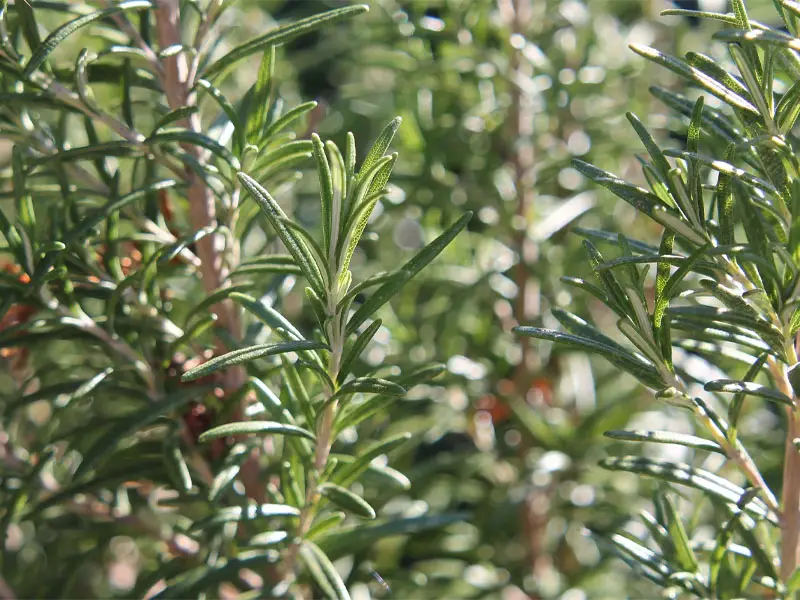
The biggest advantage of growing your own rosemary tree is that it fills your garden with a beautifully fresh fragrance.
You will also have rosemary readily available for you to use in your recipes too, which is fun and convenient.
You may even have more rosemary than you have use for, and in that case, you can dry it out for later.
Rosemary has been proven to improve memory, digestion, and your overall mood, so if you are interested in herbal remedies, you would already have heard of all the great things that rosemary can do for you.
Rosemary Tree Care
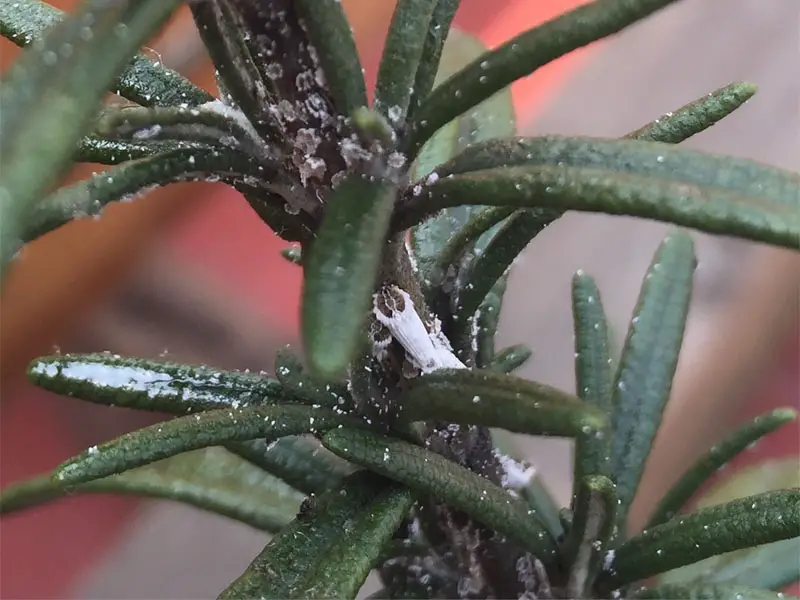
Aphids, thrips, spittlebugs, and whiteflies are common pests that you may find lurking around your rosemary tree.
These can be treated with insect repellent soaps and horticultural oils without leaving a chemical residue on the plant.
Root rot is a very common condition too and usually occurs when the plant is overwatered.
Heavy rainfall can also lead to root rot, so make sure you move your plant indoors during heavy bouts of rain or intense humidity.
Rosemary Tree Seeds
If you want to plant rosemary trees from seedlings, then you will need to make sure you are purchasing seeds from reliable distributors. Here are some of the best rosemary seeds on the market for you to try:
Seed Needs Rosemary Seeds

Gardeners Basics Rosemary Seeds

FAQs
Do you want to learn more about rosemary trees? The following frequently asked questions section will answer your questions.
Are rosemary trees hard to look after?
Yes, they are very hardy plants that don’t mind being neglected. These plants don’t need to be watered frequently, and they don’t mind being placed in full sunlight for hours on end.
Just make sure you protect them from heavy rainfall and frost during the winter months.
How can I encourage my rosemary plants to grow?
Pruning and trimming rosemary plants regularly will encourage them to grow. This is particularly important during the summer months.
Removing damaged stems and leaves will be beneficial to your plant and will keep it happy and healthy.
How long will my rosemary plant live?
Rosemary trees can live for over 10 years. If you are very good at keeping your plant healthy and free of infections and diseases, you might even get to enjoy 15 years of fragrant rosemary from your plant.
Should I let my rosemary plant flower?
Yes, you can let your rosemary plant flower, although this might not be a good idea if your plant is located outside.
If you prune your plant too late in the spring, the new stems may not be strong and hardy enough to survive the cold winter months.
This won’t be an issue for plants that are located indoors.
Do rosemary plants repel bugs?
You will be pleased to learn that rosemary plants are brilliant mosquito and fly repellants.
These annoying bugs can not stand the smell of rosemary plants, which is great for us!
Should I add coffee to the soil of my rosemary plant?
Brewed coffee and coffee grounds are highly acidic, so you should add them sparingly to your plant’s soil.
This is a very handy trick for people to use if they need to raise the acidity levels in the soil.
Check the pH levels before doing this, as you could ruin the natural balance.
Can rosemary grow in the shade?
Rosemary trees do not like growing in the shade. Your plant will not grow even if it is situated in the shade for prolonged periods of time.
If you want your plant to thrive, keep it in an area of the garden that gets at least six hours of sunlight per day.
If your plant is situated indoors, you should keep it in a sunroom or on a sunny windowsill.
Good luck with your rosemary tree growing! Let us know how you get on and share your top tips and tricks with us in the comments section below.


